We’ve had another warm winter and early start to Spring in 2024. And, unfortunately, Tammy and I have been swamped with work, just as we were at this time in 2023. As a result, despite best intentions, we have not been on any “Walk There…” outings so far. On the plus side, Tammy has been able to get out on the kayak a few times and I’ve had a little more outdoor time at the farm.
But, that’s not quite the same thing.
So, in an effort to motivate ourselves to go “walk there again,” I thought I’d edit and share a post highlighting one of last year’s walks at Sweet Marsh Wildlife Management Area near Tripoli.
Our theme for this walk was "disturbance." As in, our presence walking on the dike was seen as a disturbance by most of the other living creatures in the area. At least it seemed that way to us. So, if any of the creatures from this walk were actually disturbed, we ask your pardon and maybe even your forgiveness.
As we started the walk, I found that I had to tie my shoe, so Tammy continued on ahead. After getting the wayward shoestrings restrained properly, I took note of a line of birds (probably coots) that were moving themselves away from the area by the dike where Tammy was walking. I wanted to capture that and snapped a picture. As you can see, I must have tied my shoe too tight and I was lopsided at the moment I tried to take the picture...
Look, I realize most of you who read this blog NEVER take a picture where the horizon isn’t level. But, when you tie shoestrings too tight it can be difficult to be properly balanced.
We continued down the path and noted that there was a turtle crossing it a few hundred feet ahead of us. This Painted Turtle really wanted nothing to do with us either, but it couldn't swim or fly away. Instead, it simply pulled into its portable home and put out the unwelcome mat.
Of course, being the inconsiderate humans we are, we had to stop and observe this poor creature for longer than it wanted. To be fair, our simple passage was already considered enough of an inconvenience. But it seemed like it had a pretty nice home - and we told it so.
Of course, we got no reply and we eventually gave up having a conversation as a bad job.
We did manage to get out to the marsh before the sunshine left for the day. So, we got some blue skies as part of the bargain. And, to make it even better, the high wind that was forecast had not really arrived. There was enough to make the water a bit disturbed, but not so much to make things more difficult than it needed to be for the walkers.
The wind was starting to pick up towards the end of the walk. It even got to the point that some of the open water showed miniature white caps. But, by that point, we were close enough to the trees to avail ourselves of some shelter.
While this was not a current "disturbance," I am sure the fish that once was a part of these bones felt disturbed when it was taken out of the water and nibbled by some creature up on the dike. We noted several dried fish skeletons on the walk that indicated to us that there are some decent sized fish in the water and there are some predators that know that this is the case.
We did see plenty of Bald Eagle activity earlier in the year (only one on this walk) and we know there are other predators that might find fish to be a tasty snack. In fact, Tammy had a chance to observe some otters on a recent kayak paddle. I bet they have interest in tasty fish!
At one point in the walk, we took note of a disturbance that was not being caused by us. There was some thrashing and rustling on the near bank. But, we could not really see what was making the noise with the taller reeds and grasses between us and the disturbance causer. Both of us concluded, fairly quickly that it was one of the water-loving mammals known to be in the area, such as an otter or a beaver. Given the ruckus, we're pretty sure it was a beaver and that it had been disturbed by our presence and slapped its tail in the water a few times.
If you look at the picture above, I think you'll see a beaver lodge.
The noise was clearly enough to disturb a pair of Canada Geese that decided they could find a calmer area in the marsh to float around. Personally, I think it's pretty silly for geese to complain about a disturbance. After all, if you've been around Canada Geese, you already know they make their fair share of noise when they're around. How bad must it be when those who are used to being the disturbance become disturbed themselves?
If the plants in the area were disturbed by our presence they didn't really show it. Of course, when you are rooted to the ground, it's pretty hard to escape when a mobile creature - like a human - walks up to you wielding a camera.
I remember learning about this plant during a field trip when I was in elementary school. When I saw the flowers as we were walking, that memory was tugging at me, but I just couldn't attach the name and the event in my life to it. This is a Bloodroot flower and you can see the leaf, on its separate stem, just below the flower itself. Blood root was used by Indigenous peoples as a red dye and as an insect repellent. Their flowers are only visible for a short period of time and they close up at night and I count myself fortunate to be re-introduced to them.
There were several mounds of fuzzy leaves on the dike near the walking area that are Common Mullein. I did a quick search and found an interesting article that featured this wild plant. Of course, the only thing I took from that article was one of the plant’s nicknames (Cowboy Toiletpaper). There were so many pertinent facts I could have shared, but I’m stuck with the toilet humor name.
So, as a penance, I had to check out other resources too in order to get my mind on to the task at hand. What was the task at hand? Why, it’s writing this interesting blog for all of you wonderful people!
Common Mullein is a biennial, which means it will live for two years, sending up its flower stalk in the second season. The flower stalks from last year's blooms are still in evidence at the marsh. However, there are fewer standing than there were the last time we were there. A little bit of wind can reduce the numbers effectively, it seems.
Just above is an image showing one of the dried stalks of a Common Mullein plant. They can get as much as six to seven feet tall, but most of the examples I have seen over time are between three and four feet in height. When blooming, the yellow flowers on the stalk seem to open randomly over an extended period of time.
Common Mullein is an introduced plant (it is not native to the United States) and is actually considered an invasive species in Michigan. On the other hand, Iowa and Minnesota simply identify them as wildflowers. On each site, they recognize that the seed can only germinate on bare soil, which actually makes it fairly easy to control them. This also explains why the mullein is near the path on the dike.
See, you wondered how I would keep with the "disturbance" theme, didn't you? Common Mullein LIKES disturbed soil.
Yay me! I know disturbed!
And now we move from that kind of disturbance to a picture that shows how my brain was momentarily disturbed. I looked over at this culvert and my brain said "how is it possible that there is no water in the culvert itself?"
The current water level was very nearly at the exact half-way point on the round culvert. The reflection provided me with an optical illusion that made it look like I could see the entire circular opening of the metal tube.
Ok. I thought it was cool. You can either decide that I am truly disturbed or you can just consider that this is what happens when you read the Genuine Faux Farm blog.
And, of course, one Painted Turtle sighting deserves another. This one was a bit smaller and seemed to be more colorful. It was also a bit less shy, deciding it could continue walking on its path after I backed off to about fifteen feet.
Yes, it was a bit disturbed, but maybe this turtle was feeling more philosophical about it?
The last recorded disturbance of the day happened to be the interesting tracks that disturbed the mud in what remained of Marten's Lake. Marten's Lake was still drained for maintenance. Happily, the DNR was able to find someone else to take the contract and do more work last year. We haven’t been out there yet, but we’re hoping things are filling back up.
Anyway, these tracks criss-crossed and had lots of fun loops to them. With the parallel tracks, we surmised that they were created by a weasel or otter. And no, we weren't going down into the mud to get a closer look. For those who might have interest in learning to identify animal tracks, I ran across this nice resource.
The final (unrecorded) disturbance of the day was the camera telling yours truly that I needed to charge the battery. That's okay. I took enough pictures of disturbances for one day. All in all, it was a good walk and I am sure we will make time to walk there again.





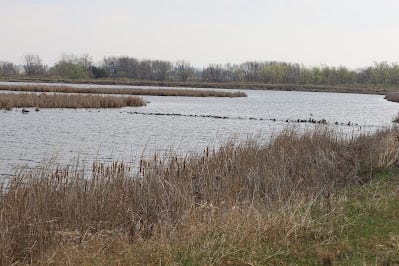
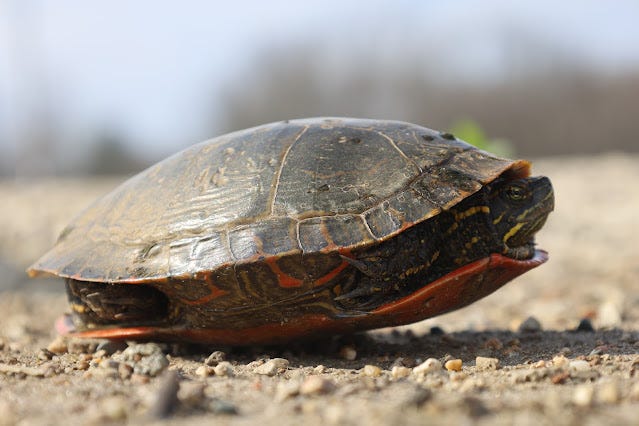
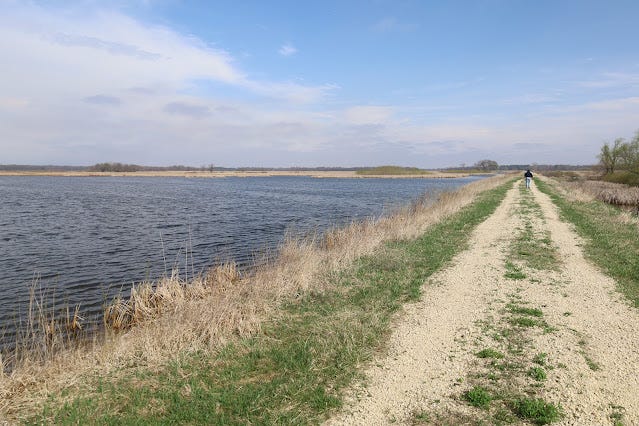
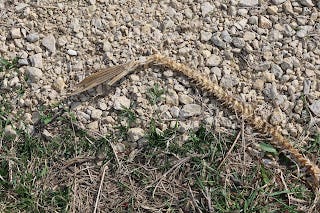
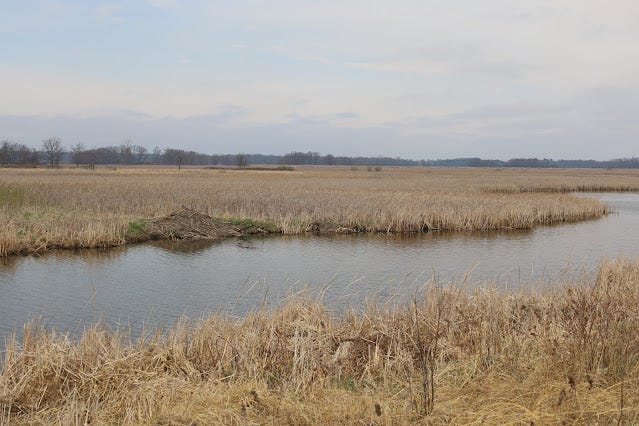

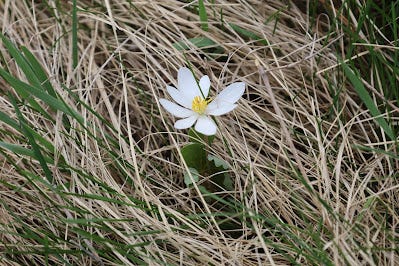
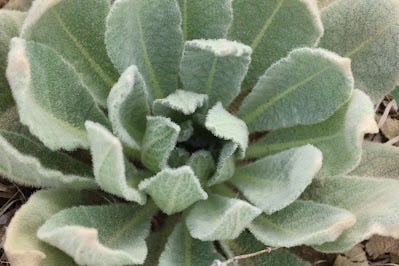


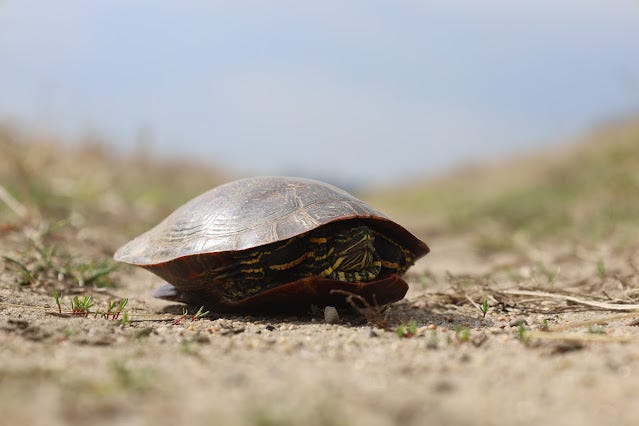
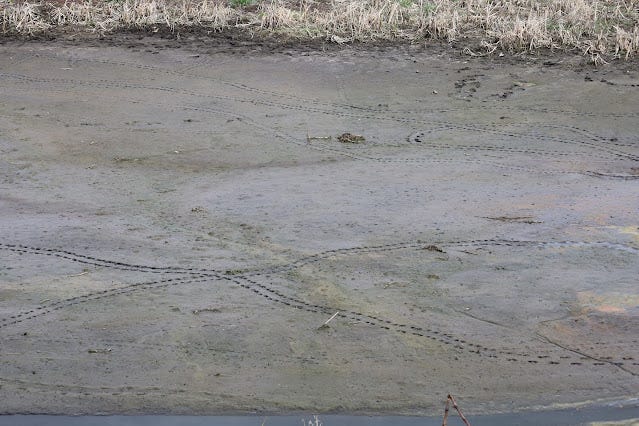
It's amazing how wonderful a simple walk can be!
Great resource for identifying tracks! It’s the first time I’ve seen a site compare hog tracks to deer tracks. Since we have both deer and wild boar here in Florida, I’ll have to take a closer look to spot the differences next time I’m out. I’m surprised they went into alligators footprints. The tail drag is so distinctive that I’ve never bothered to look for the footprints- I usually just get out of there.